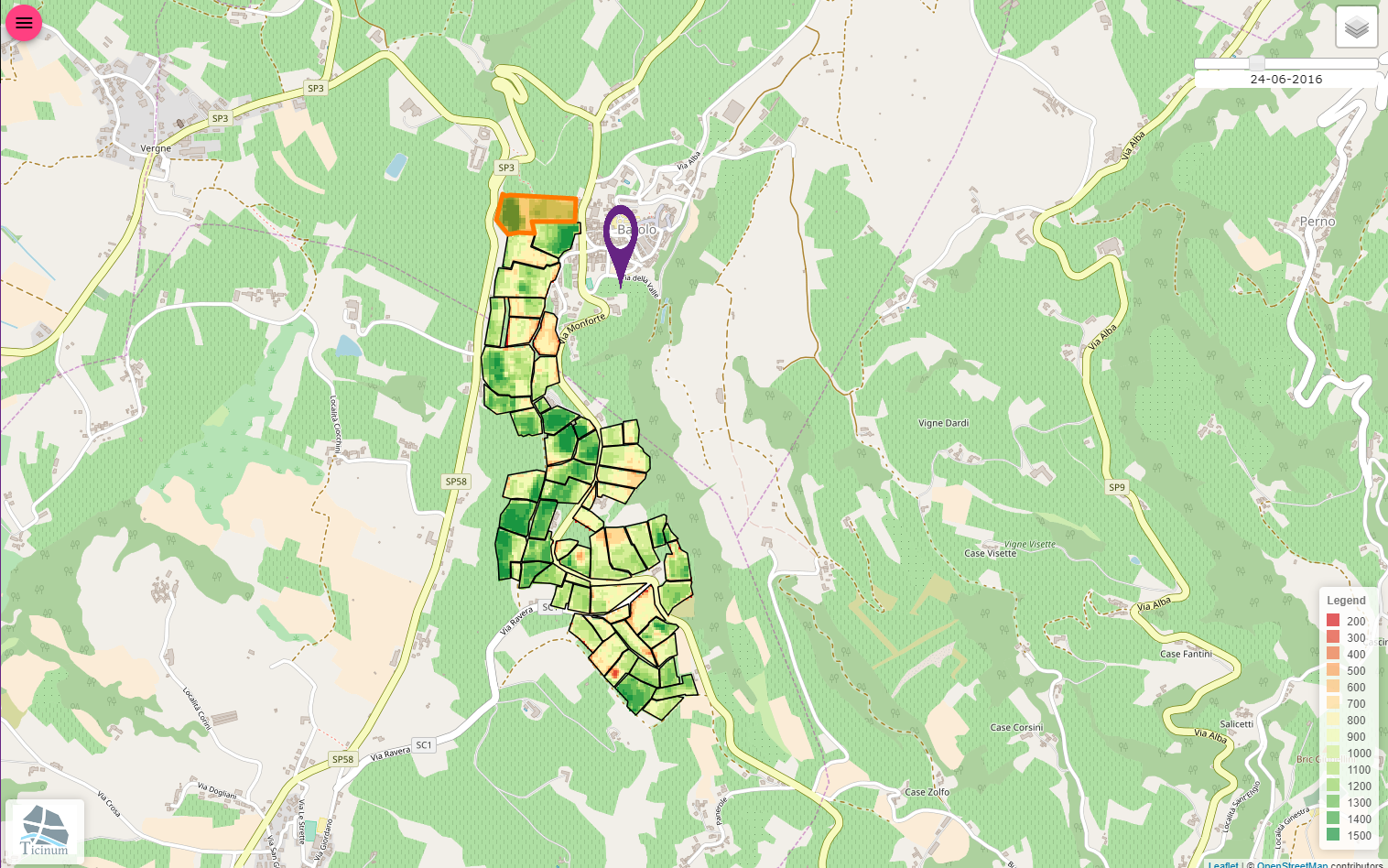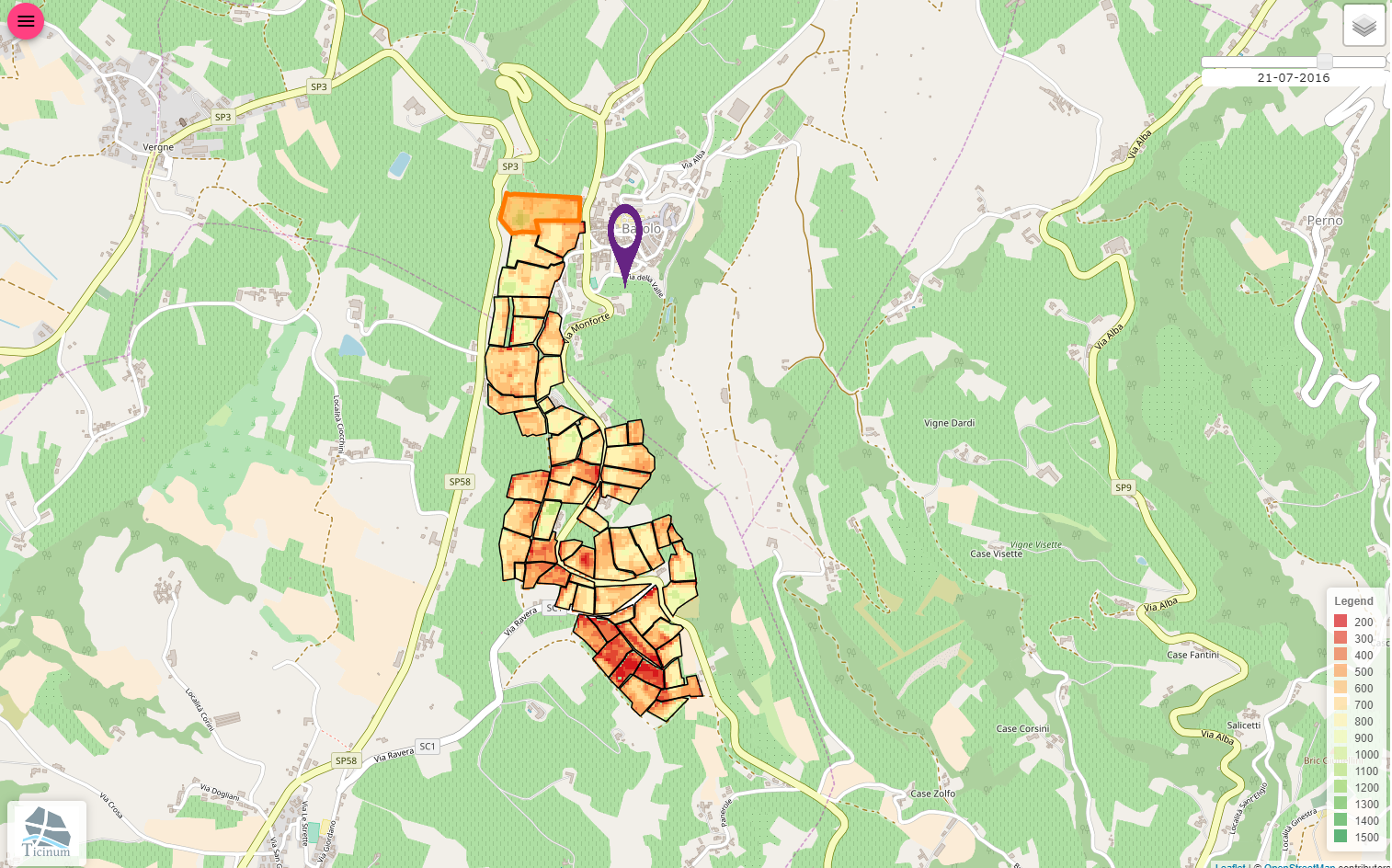
Objectives of the service
The Saturnalia service collects, aggregates, and analyses data related to vine growth and it uses this data to forecast wine quality. At its core lies a system for automated retrieval and analysis of satellite Copernicus data, plus data from tailored, technologically advanced weather station, which are distributed over the areas of interest. The system can then leverage such data to predict the characteristics of the upcoming vintage, and the future wine obtained from it.
Saturnalia offers, to investors and distributors, access to insights on wine quality indicators and their trends; at the same time, it helps vine growers to manage and care for their crops.
Users and their needs
Fine wine is recognized as an alternative asset class which value is strictly related to its quality. Wine investors want early information on wine quality in order to make wise investment decisions, potentially better than competing investors do. Earlier purchase, albeit riskier, can mean substantial savings; therefore, early knowledge about wine quality translates into monetary value.
Distributors are obviously also interested in understanding, earlier than their competitors, which wines are more likely to be sold out in the future.
Wine growers and their consortia may also be interested in monitoring the growth of their crops.
Finally, insurance companies may want to use Saturnalia information portfolio in order to vet loss claims in case of adverse weather events.
United Kingdom and Germany as a start.
Service/ system concept
Saturnalia automatically retrieves and analyses satellite and environmental data over the areas of interest. Both data sources are used to automatically combine measures and determine quality-related indicators, which consist of numbers related to inherent characteristics of wine. This is made possible by the complete monitoring of the phenological cycle of vines and their conditions recorded during each phase. The indicators are then combined with historical vintage data for quality forecast using deep learning approaches.
Space Added Value
Saturnalia automatically accesses the Copernicus Hub through an API-based device, and selectively downloads Sentinel-1 and -2 datasets on the relevant areas. Indicators, such as soil moisture and tasselled cap, are computed from open Sentinel-1 and -2 data. Their short revisit time is a major advantage here. Very-high-resolution imagery are also considered for specific, on-demand cases. As per weather data, an historical database is already in place with basic measures related to temperature, precipitation and wind.
The service requires a continuous flow of information. Copernicus and its long-term investment plans helps creating favourable conditions to the provision of Saturnalia service.
Various sources offer weather data in various forms, but in a non-homogeneous manner and mostly without long-term commitments, therefore Satunalia uses meteorological stations which have been designed, build, deployed and customised by the Consortium. The collected data flow directly into the platform as long as all the services are up and running.


Current Status
Saturnalia has taken two important steps expected to boost the technical and market development of the idea. The first was to sign a cooperation with the local consortium of grape growers and winemakers named Terre d’Oltrepò. The second is to collaborate with Dr Gianpaolo Pagliat as advisor . Dr. Paglia is a co-founder of Smart Wine Export, a company which mission is to boost export of Italian wine. Besides having extensive knowledge of the wine market, he used to be a wine producer. Thanks to the interactions with Dr. Paglia and Terre d’Oltrepò Saturnalia has much clearer idea of the targeted markets and how to best tailor the proposed services On the technical side, the innovative weather station prototype is being tested and the quality prediction algorithm is being tuned.



